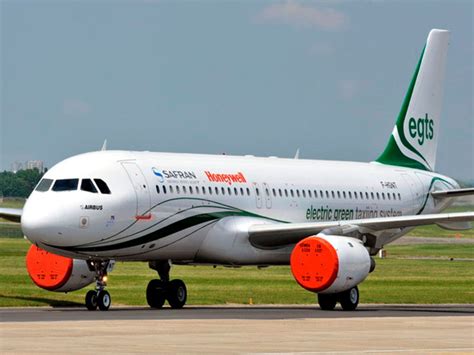
The 2025 Paris Air Show had a subdued tone. With the crash of an Air India 787-8 just before the show was set to begin, the atmosphere of the event changed from a celebration of continuing industry growth and demand to one that was more cautious. When an unfortunate event impacts the industry, everyone, including competitors, want to learn from the investigation and make certain that similar circumstances are corrected and never occur again. The good news is that international cooperation in accident investigations has historically done just that, dramatically improving safety for the industry and making air travel the safest
The other good news is that the major OEMs are continuing to project strong demand, with the need for more than 43,000 aircraft over the next 20 years. Embraer’s forecast was strong for the up to 150 seat market with 10,500 aircraft needed. Demand for air travel continues to grow, and will fuel growth for the commercial aircraft industry.
The Air Show technically goes for five professional days, but by Thursday new orders slow to a trickle and the show begins to wind down. So here is our summary of the show. This could be characterized as the Airbus show on the commercial side, with Boeing pulling aside.
Airbus Books $21 billion in new orders and options
Airbus, while expressing its sorrow at the Air India loss, continued commercial activities at the Paris. The company booked a series of orders on the first three days of the show. Orders for Airbus included several for the wide-body A350 family from Riyadh Air, AviLease, and Starlink, and a large order for 100+50 A321neos for VietJet as well as an order for 40+44 A220s with LOT Polish. Airbus also indicated that it withheld some announcements in light of the Air India accident, contributing to the subdued nature of the show this year. We anticipate the deferred announcements to be made before the end of the 3rd quarter.
Orders for Airbus from Air Asia were expected, with the potential launch of a larger version of the A220, that may now wait until a restructuring of Air Asia’s parent company is resolved in July. In addition, a major order from China failed to materialize at the show, likely waiting for disclosure later this year. We expect Airbus to disclose several other orders in the second half of the year.
Airbus also held briefings prior to the show, indicating that their production process for A320neo family aircraft is well ahead of deliveries. Airbus has nearly 40 aircraft awaiting engines that should be delivered quickly once supply constraints are settled later this year, and reaffirmed its guidance for production this year. Airbus, however, would not provide financial projections, citing tariffs, even though many of its suppliers and other industry participants had no problem in providing that guidance.
Nonetheless, it appears Airbus is having continues sales success, is booked out 7-8 years into the future for the A320neo family, but needs additional orders for the A220. The AirAsia decision forthcoming in the second half of the year could help backlog for that program significantly, as did the LOT Polish order announced at the show. Airbus wide-body aircraft also received a short in the arm with A350 family orders from Riyadh Air, AviLease, Starlink, EgyptAir, and MNG Airlines.
Boeing reduced its presence at the show
Boeing essentially cancelled all announcements after the crash of an Air India 787-8 Dreamliner. The company’s CEO Kelly Ortberg and Commercial Aircraft CEO Stephanie Pope did not attend the airshow and the company cancelled planned events, contributing to the subdued atmosphere.
With Boeing coming off of a successful middle-eastern road trip with US President Donald Trump and having inked several deals during that trip, expectations for additional major Boeing orders were low. Boeing had just booked 350 new orders in May prior to the crash, and was showing strong progress with 737 MAX production and quality metrics. Boeing should have been coming into the air show on a roll, with strong orders and progress on the MAX. Instead, the subdued presence at the show made Boeing an afterthought in 2025.
The crash has resurfaced historic quality issues with the 787 and Boeing is focused on discovering what happened with the Air India aircraft and whether any other aircraft in the fleet have a potential safety flaw. While there is no evidence of a systemic problem at this point in the investigation, that would be a worst case outcome for Boeing.
Embraer faces geo-political as well as competitive headwinds
Embraer has been a successful supplier of EJets to LOT Polish airlines since it took delivery of the first E-170. LOT currently operates a substantial E-Jet and E2-jet fleet, and Embraer was surprised at the decision for Airbus. Embraer indicated that geo-politics influenced the decision, which had a high number of ministers and politicians at the order ceremony. Embraer also learned that Airlink will be a customer for 10 leased E190-E2 aircraft, and that Bridges Air Cargo will be the first operator of E190F, a P2F conversion of EJets to freighters, leasing two units from lessor Regional One. Regional One has in-turn doubled its order for conversions from 2 to 4 units.
Embraer received a major EJet order for 60 firm and 50 options from SkyWest. Unfortunately, a smaller E2 jet never reached the market due to US major airline scope clause restrictions.The company’s new sales are replacing older EJets with the EJet plus, which unfortunately is not as efficient as an E2 model would have been.
Embraer also continued its NATO success announcing a win in a competition for Lithuania, which will join 7 other NATO that have selected the model, in a shared NATO configuration. We expect additional NATO countries to also order the C-390 over the next few years as European defense budgets increase.
EVE, Embraer’s urban air mobility unit, received a firm order for 50 eVTOL aircraft valued at $250 million from Brazilian operator REVO, which will operate in São Paulo.
The subdued show still remained a networking success
Nonetheless, this is one of the few global events when multiple customers can meet with the OEMs, typically on a CEO to CEO level, to maintain relationships and discuss future plans. When it comes to announcements, both parties need to agree to disclose orders at the show, and recent trends have middle-eastern carriers announcing at the Dubai Air Show and South Asian carriers at the Singapore Air Show. Still, Paris and Farnborough, which alternate years, remain the major venues for announcements. 2025, unfortunately, is not a normal year.
But geopolitics also impacted the show
Israeli exhibits, which included offensive weapons, were shut down by the Air Show authorities, with access to the exhibits restricted. Of course, offensive weapons were also featured by French and US providers, without restrictions. This may have been a political statement resulting from the wars in Gaza and Iran and political disagreements between France and Israel. Nonetheless, plenty of firepower was shown by other industry players, making the rationale for the restriction suspect.
Views: 163




